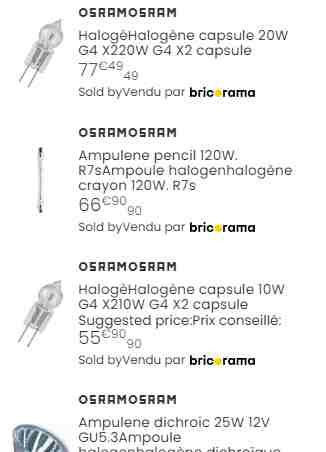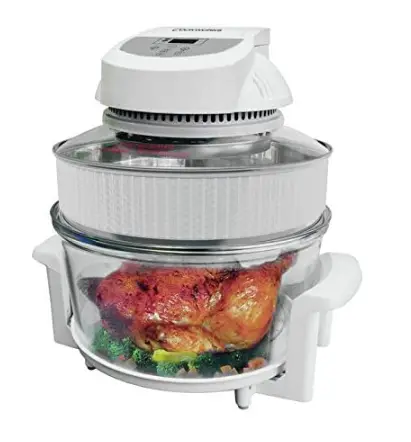**** DO NOT WORRY THE BAN EXCLUDES HALOGEN OVEN LAMPS *****
Europe-wide Halogen Bulb Ban 2018 – the main points
Earlier this month, the European Union (EU) took a significant step towards reducing carbon emissions and promoting energy efficiency by voting to ban the sale of Halogen lightbulbs across the bloc. This decision comes after years of consultation and research that consistently demonstrated the superior energy-saving capabilities of LED alternatives. The ban came into force in September 2018 and this article explores the key ramifications of the phase-out, including the estimated carbon savings, potential cost reductions for households, alternative lighting options, and the reactions of the green economy.
Energy Efficiency and Carbon Reduction
The EU’s decision to phase out Halogen bulbs is driven by the goal of reducing carbon emissions and promoting energy efficiency. Numerous studies have concluded that LED alternatives consume just one-fifth of the energy required to power Halogen bulbs. This makes them a clear choice for reducing environmental impact. By implementing this ban, the EU estimates that more than 15 million tonnes of carbon emissions will be prevented annually. This is equivalent to the emissions generated through Portugal’s annual electricity usage. Which highlights the significant impact the ban can have on reducing greenhouse gas emissions.
Buildings account for about 40% of Europe’s energy consumption. Lighting being 15% of this proportion. Thus, the potential energy and carbon savings resulting from the move to LED lighting solutions are great. By replacing Halogen bulbs with LED alternatives, energy costs be reduced for bill payers. Also the overall carbon footprint of the EU can be significantly reduced.
Cost Savings for Households
Aside from the environmental benefits, switching to energy-efficient lighting can also lead to substantial cost savings for households. According to lighting manufacturer Philips, the average household can save up to £112 per year by switching to more energy-efficient lighting options. This calculation is based on research from the Energy Saving Trust, which found that a typical Halogen bulb uses £11 worth of electricity annually, whereas an LED equivalent consumes only £2 worth of electricity. The cost disparity is evident, and the long lifespan of LED bulbs further adds to their cost-effectiveness. While Halogen bulbs last for an average of two years, LED bulbs can typically function for 15 to 20 years before failing, reducing the need for frequent replacements and associated costs.
Understanding the Ban
To clarify the ban’s scope, retailers will not immediately stop selling Halogen bulbs on September 1st. They will be allowed to sell their existing stock but will not be able to reorder more once their supply runs out. The ban will be applicable in all EU countries, with a few exceptions for certain specialized Halogen bulbs, such as those used in ovens, capsule bulbs, linear bulbs, and low-voltage reflector bulbs. However, the continuity of the ban in the UK after Brexit has not been finalized.
Halogen Ovens Are Not Banned
These popular cookers are not affected by the Halogen ban. Although the Halogen lamp is inefficient as far as light output goes, it is very efficient as regards heat output.
As an oven, Halogen is ideal, being quick to heat up, easy to control, economical with electricity and cooks in a similar way to a gas cooker using convection, but much quicker. The speed of cooking also adds to the efficiency.
The Popularity of Halogen Bulbs and the Need for Change
Given their short lifespans and energy-inefficient nature, one might question why Halogen bulbs were popular in the first place. The answer lies in their affordability. Halogen bulbs typically cost as little as £1 each, making them an accessible option for consumers with limited budgets for immediate lighting expenses. Additionally, Halogen technology has been around for over 60 years and gained popularity in the EU after the phase-out of incandescent bulbs in 2009. However, as energy efficiency and sustainability have become key priorities, the need to transition away from Halogen bulbs became evident.
Green Economy’s Response
Green Economy’s Response (250 words): The Halogen ban has been widely welcomed by energy managers, green campaign groups, and sustainability leaders. Richard Twinn, senior policy advisor at the UK Green Building Council, hails the move as a “win-win for consumers and the environment,” emphasizing its contribution to reducing the UK’s 20% carbon emissions from homes. However, Twinn highlights the importance of increased investment in insulation to fully unlock the potential cost and carbon savings in the built environment sector.
Schneider Electric’s zone president for the UK and Ireland, Mike Hughes, argues that the removal of Halogen bulbs prevents consumers from investing in a “false economy” when it comes to lighting choices. He draws parallels to previous successful initiatives like energy ratings on appliances and charges for plastic bags, which have effectively changed consumer attitudes and behaviors. Hughes stresses the importance of both businesses and governments encouraging the adoption of more energy-efficient products and practices.
Greenpeace calls for the UK Government to enshrine the Halogen ban into national law post-Brexit, asserting that moving away from “wasteful” Halogen bulbs will drive up environmental standards and stimulate the market for greener alternatives.
Alternative Lighting Options
The most popular alternative lighting option, encouraged by the EU, is LED bulbs. LED luminaires typically have an efficiency between 100 and 140 lumens per watt (lm/W), making them around 75% more energy-efficient than Halogen bulbs. Although LED lighting may have a higher upfront cost, the EU argues that the long lifespan, low maintenance requirements, and energy-saving capabilities of LEDs lead to cost recovery within 12 months.
Prominent companies like Marks & Spencer and Sainsbury’s have already made the switch to LED lighting as part of their sustainability goals. In addition to LEDs, compact fluorescent lamps (CFLs) provide an alternative option. CFLs use around 60-80% less energy than traditional incandescent bulbs and have a lifespan of approximately 10 years, five times longer than Halogen bulbs.
CFLs offer a cost-effective compromise, being three times cheaper than LEDs. However, they have slower startup times and limitations with dimmer switches and outdoor installations. Despite these limitations, consumers can easily replace Halogen bulbs with LED or CFL bulbs in existing light sockets without issues.
Conclusion
The EU ‘has seen the light’ and made the decision to ban Halogen bulbs. It is a significant step towards promoting energy efficiency and reducing carbon emissions. By transitioning to LED or CFL bulbs, consumers can not only save on energy costs but also contribute to a greener future. The ban’s positive reception among energy managers and environmental organizations highlights its potential impact on sustainability.
Information is mainly from an article on the Edie Site 2018
In a Nut Shell….
So Basically halogen lighting is costing us millions of tons of carbon emissions, in fact the equivalent of a country like Portugal or Italys whole electricity production, every year.
- Changing Halogens for LED lamps would save us 75% of our lighting electricity costs
- LEDs last at least 10 years ( newer versions up to 20 years ) whereas Halogens generally last only 2 years
- It used to be true that LEDs were only available for bright white light but now you can get any colour imaginable
- It used to be true that LED lamps were very expensive, but the cost has reduced by 80% in the last 5 years
I did a simple google search today (2 Jun 2023) and Halogen Ovens are certainly thriving in France and the UK
But wait, I also did a simple google search today (2 Jun 2023) and found these on UK Amazon ( and pages more ) !

Surely this isn’t 2018 stock, five years on, what is going on? Maybe the rules in the UK are now different after Brexit?

Maybe the Amazon uk is affected by Brexit?
Nope! these Osram Halogen Lamps are on sale on Bricorama in France today ie in the EU.




